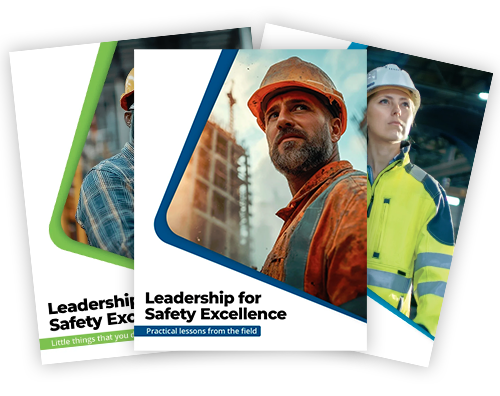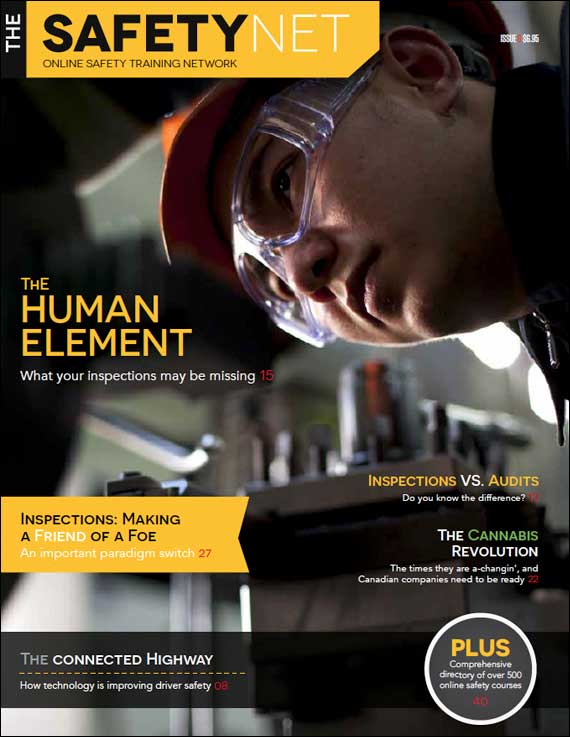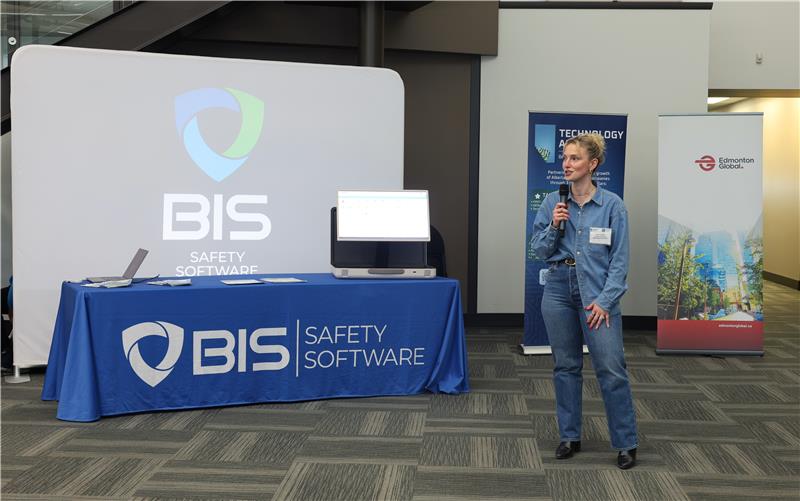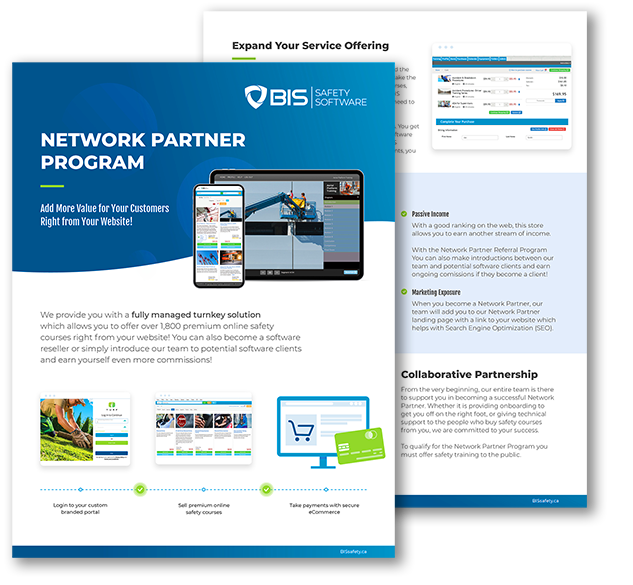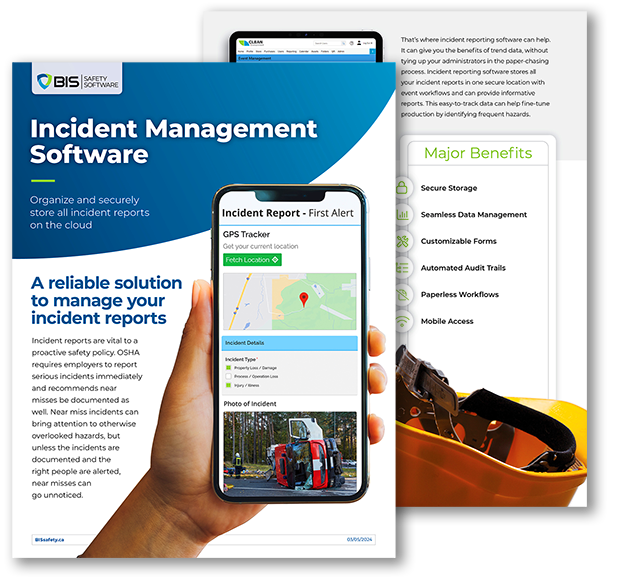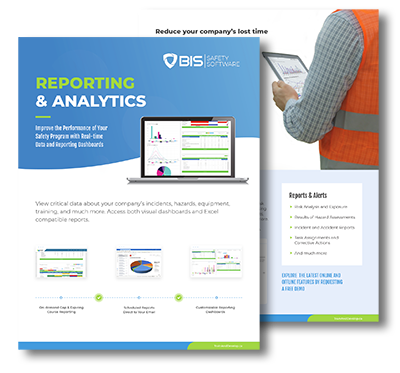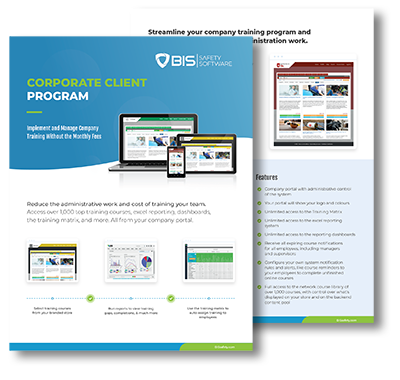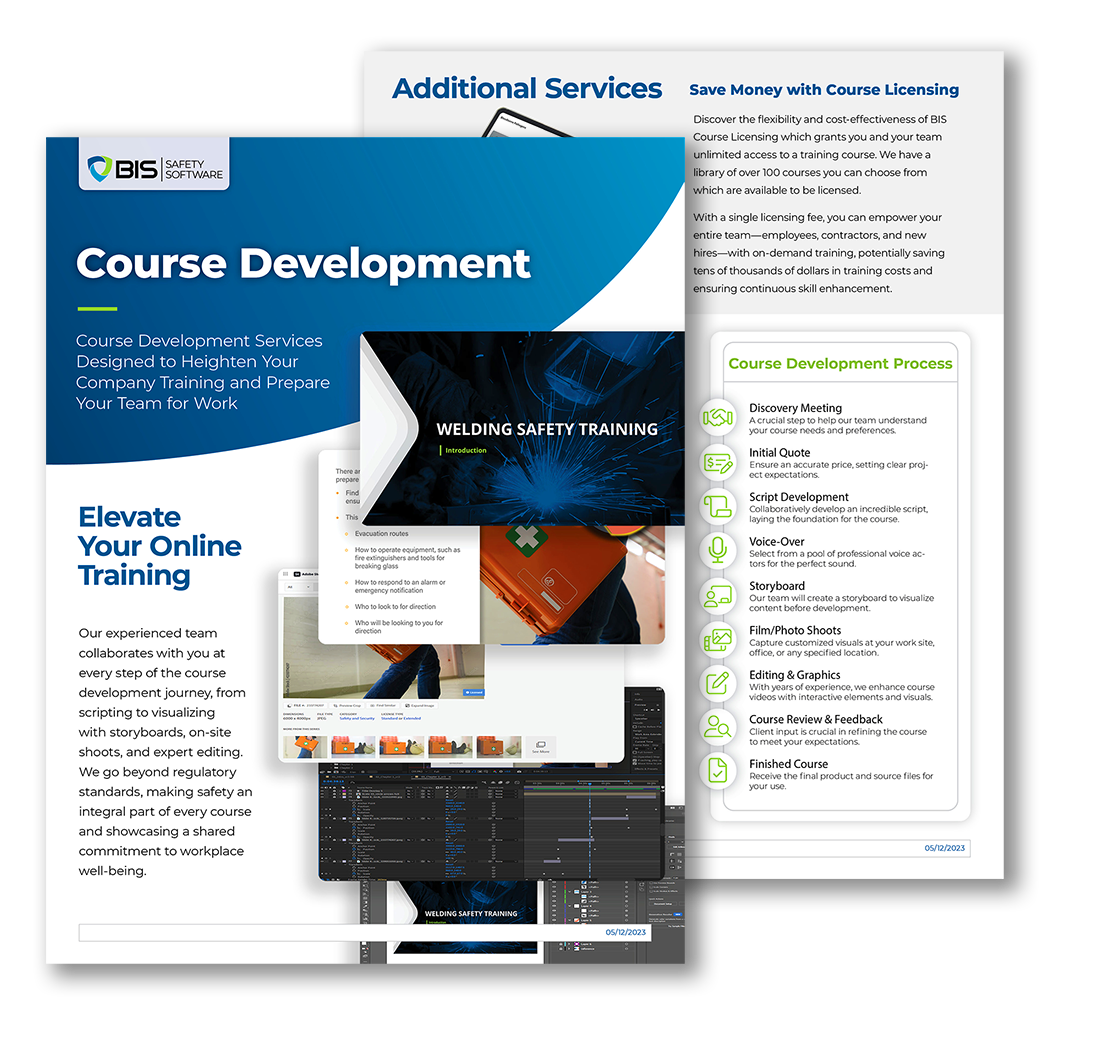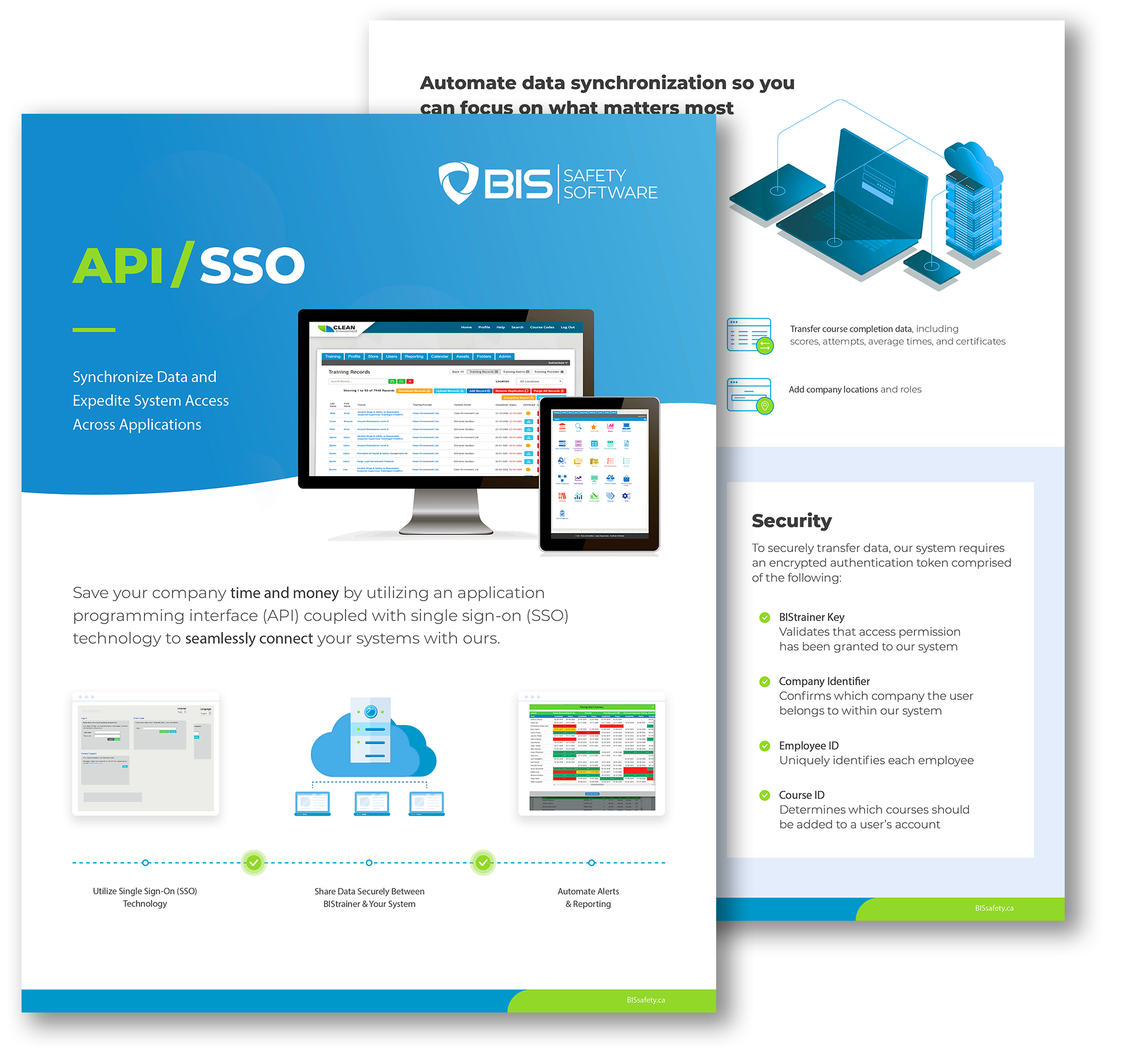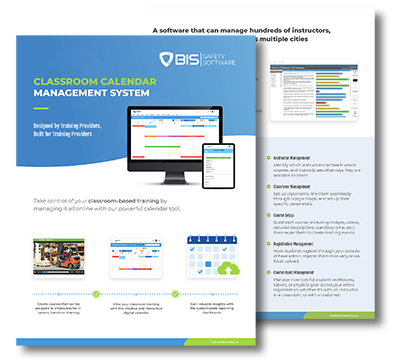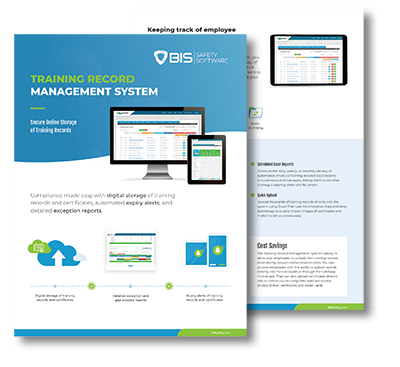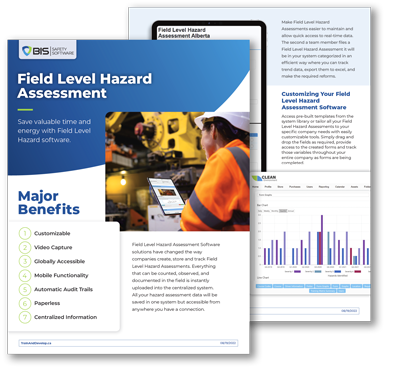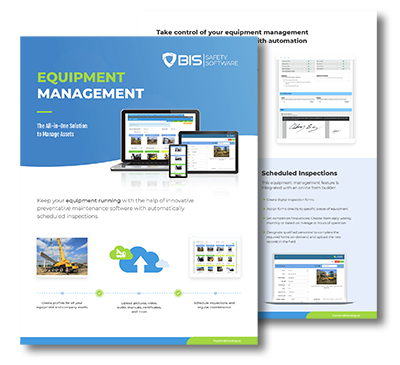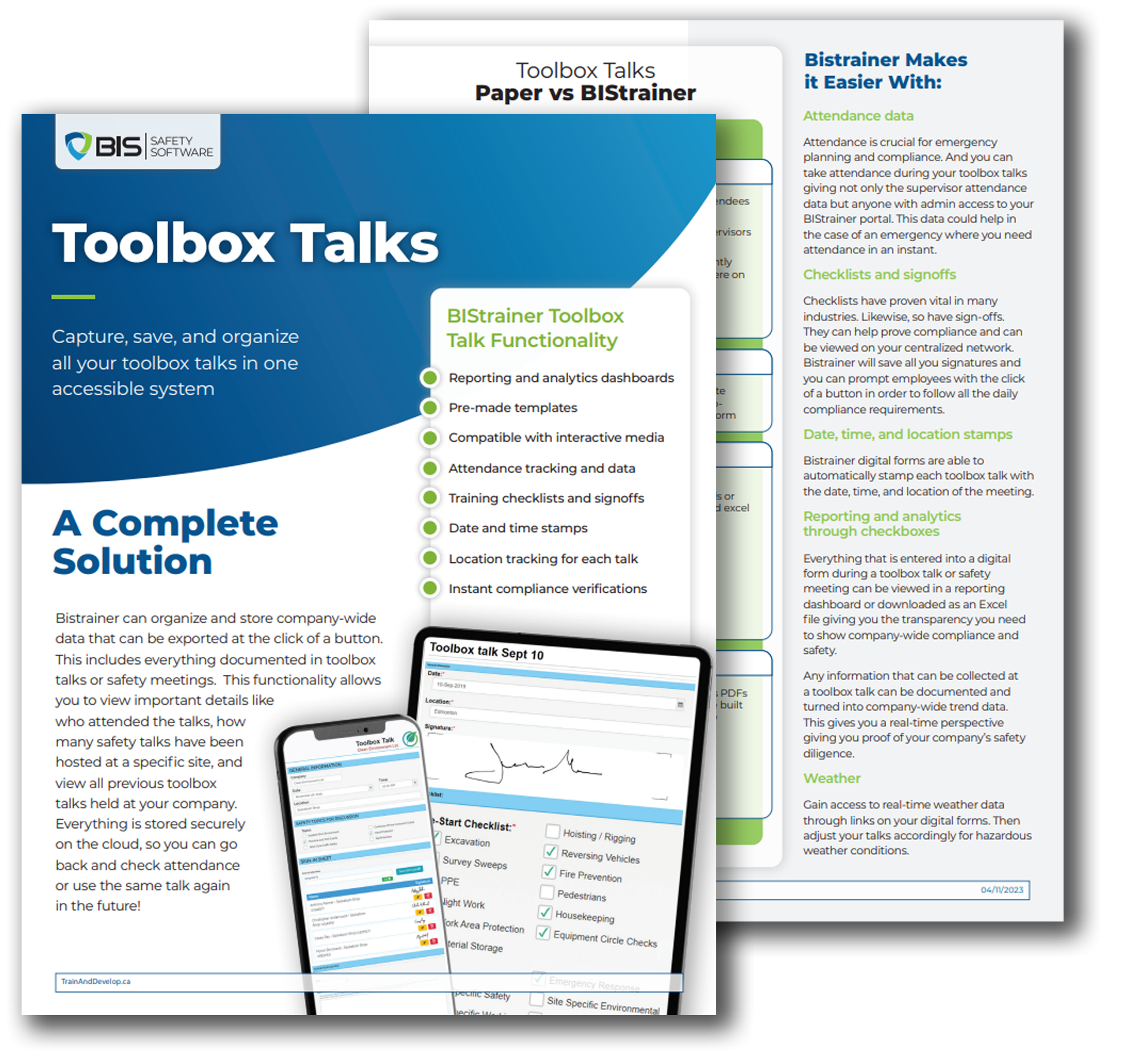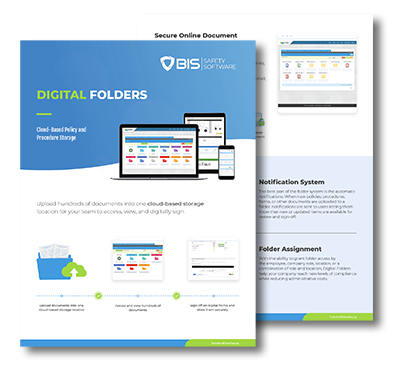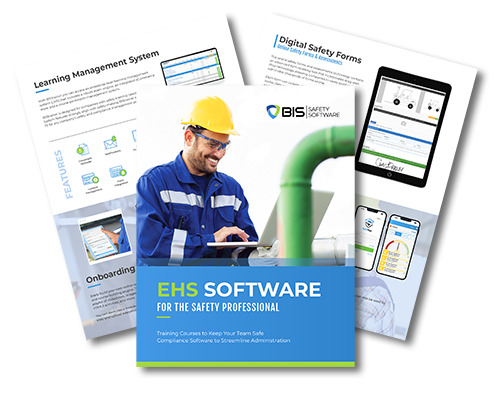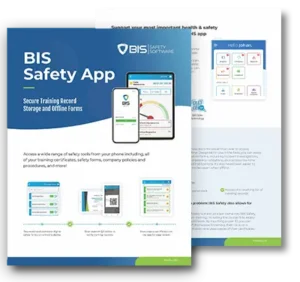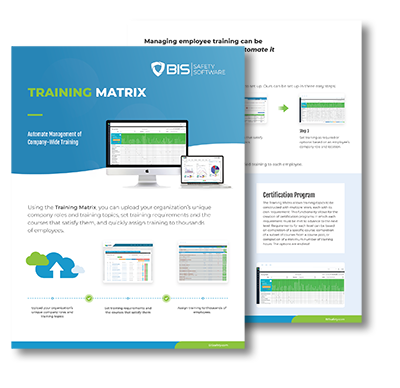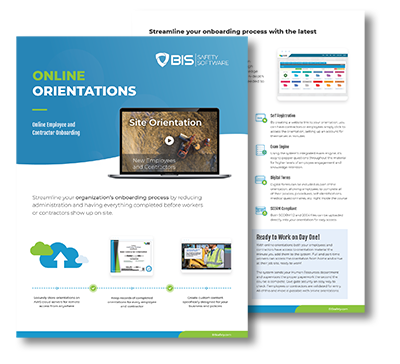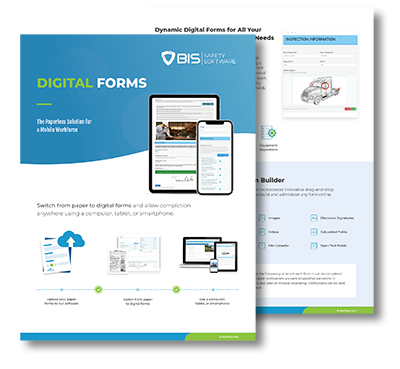Building Safer Fleets in Canada: The Role of Daily Pre-Trip Inspections

Daily trip inspections are a critical safety measure for commercial drivers and fleet operators. A thorough inspection helps identify potential issues before they lead to accidents, vehicle breakdowns, or regulatory violations. Under NSC Standard 13, drivers must perform these inspections at least every 24 hours, ensuring their vehicles are in safe operating condition.
Why Commercial Vehicle Inspections are Important
With more than a million kilometres of roadway, over 26 million registered vehicles, and a trucking sector that moves Canada’s economy, small misses can scale into big problems fast. Thorough inspections of commercial vehicles are both necessary for compliance and help prevent costly incidents and delays in the long run. In Canada, vehicle inspections are mandatory at least once every 24 hours. This is often called the pre-trip inspection or the daily vehicle inspection.
A proper trip inspection helps drivers:
Identify mechanical defects before they cause failures
Ensure compliance with NSC Standard 13
Enhance road safety for themselves and others
Reduce costly repairs and vehicle downtime
Prevent fines and penalties for non-compliance
Standard 13 of the National Safety Code outlines the regulations for the pre-trip inspection. Routine inspections are required by law and play a crucial role in preventing accidents.

What is the National Safety Code?
When it comes to commercial vehicle safety compliance, the National Safety Code (NSC) sets the bar. Developed by the Canadian Council of Motor Transport Administrators (CMMTA), along with motor carriers, the NSC consists of 16 standards that outline various aspects of safety for commercial vehicles (e.g. cargo securement, hours of service, etc.).
NSC Standard 13 sets the baseline for what to inspect, how often, and what counts as a major defect across commercial trucks, tractors, trailers, buses, and motor coaches. In the standard, you can find lists of the parts of the vehicles to be included in the daily vehicle inspections.
For carriers and drivers, applying this standard daily is a fundamental operational control. The payoff is practical: fewer breakdowns, stronger audit performance, stable safety ratings, and crews who hit the road confidently.
Defects versus Major Defects
The schedules of NSC Standard 13 list what counts as a defect and what counts as a major defect. However, it’s up to the driver to make the call and act on it.
Defects (e.g., an exterior exhaust leak ) must be recorded in the report, the carrier notified, and repairs planned
Major defects (e.g., exhaust entering the cab, critical brake or steering issues, etc.) must be recorded, the carrier notified immediately, and the vehicle placed out of service
For example, let’s look at the heating system in your commercial vehicle. In the summer, a broken heater is something that still needs to be fixed, but it won’t impact safe vehicle operation. However, in the winter that same broken heater can mean that the window doesn’t defrost. Without a clear view, it’s not safe to operate the vehicle. This is a major defect and requires the vehicle to be placed out of service until it’s repaired.
When a commercial vehicle is placed out of service because of a major defect, it’s the carrier’s responsibility to ensure the vehicle is repaired and functions properly before it’s returned to service.
All of this must be recorded. Even if the driver corrects a minor issue on the spot (e.g. removing a rock stuck between duals), they must document their findings and corrective actions. Patterns in “small” defects often reveal emerging maintenance problems.

Why Drivers Skip Vehicles Inspection
A complete pre-trip commonly takes 45–60 minutes. Skips happen when drivers face pressure to meet unrealistic deadlines, weather is miserable, or thin training leaves drivers unsure of the steps to take or the parts to inspect.
Treat these as system issues, not driver issues. This means:
Include inspection time in trip planning
Standardize checklists by vehicle type
Train for mastery: move beyond lectures and coach drivers to identify, classify, and justify findings against the schedules
Track defects, analyze repeat offenders by unit, and verify repairs are completed and documented within the reporting window
Commercial Vehicle Inspection Enforcement is Real (and Expensive)
Across Canada, regulators and police conduct commercial vehicle inspections year-round. Offences for skipping daily inspections often start in the $250–$1,000 range; operating an unsafe vehicle can climb to $20,000, plus impoundment (e.g., 15 days for major defects in Ontario), demerits, insurance hikes, and safety-rating hits. Those numbers don’t include the unplanned costs of incidents: injuries, downtime, claims, and reputational drag.
Practical Tips for Pre-Trip Inspections
For drivers, the daily commercial vehicle inspection is one of the most important parts of the job. The more applicable tips drivers have on how to do their jobs safely, the better able they are to recognize damage and catch issues.
Slow and steady: Rushing hides defects; instead, set up a thorough and repeatable pattern drivers can finish even in the rain, cold, or dark
Use your senses: The inspection goes beyond looking at the commercial vehicle, listen for new noises, smell for fuel/exhaust, and check the ground for leaks and wear
Keep the cab tidy: Loose gear becomes projectiles and clutter hides issues
The bigger picture: professionalism you can see
Daily pre-trip inspections are a signature of professional operations. They protect drivers and the public, stabilize maintenance budgets, strengthen safety ratings, and prove due diligence when enforcement drops by for a look. When drivers are resourced and carriers close the loop, everyone gets home on time, and trucks come back ready for the next shift.

What is the National Safety Code?
Stronger Pre-Trip Inspections. Safer Fleets.
Daily commercial vehicle inspections are a crucial part of a safety system that protects drivers, prevents costly breakdowns, and keeps fleets compliant with NSC Standard 13. A consistent, well-trained inspection program means defects are spotted early, documentation is audit-ready, and equipment stays roadworthy.
Our Pre-Trip Inspections course gives your team the tools to apply inspections with confidence, building a standard that protects drivers, proves compliance, and keeps your fleet road-ready day after day.
What’s Covered in Daily Trip Inspection Training?
Understanding NSC Standard 13
Overview of daily trip inspection regulations
Responsibilities of drivers and fleet operators
Consequences of skipping inspections
Fines, penalties, and enforcement measures
Pre-Trip Inspection Procedures
How to conduct a systematic vehicle inspection
Required documentation and reporting
Identifying minor vs. major defects
Communicating issues to employers and maintenance teams
Key Inspection Areas
Cab and dashboard components (lights, gauges, steering, brakes, seatbelts)
Walkaround inspection (mirrors, doors, tires, fuel tank, exhaust system)
Handling Defects and Compliance
How to recognize common defects and safety risks
Steps to take when identifying a major defect
Reporting defects and arranging for repairs
Keeping accurate logs and inspection records
Related Articles
- All Posts
- #EmergencyPreparedness
- 2025 safety trends
- 360 Immersive
- 360immersive
- 6S Safety
- accident prevention
- accidental careers
- accountability
- adjustable workstations
- adult education
- AFAD
- AI automation
- AI implementation
- AI in business
- AI in operations
- AI in Safety
- AI podcast
- AI strategy
- AI transformation
- Airborne Hazards
- Alberta safety
- Alberta safety courses
- Allan James Moore
- Anhydrous Ammonia
- artificial intelligence
- asking for help
- audit findings
- audit readiness
- Audit Reporting
- automated compliance workflows
- automation in safety
- automation strategy
- avoidable injuries
- awareness
- Aztec Safety
- back strain
- BambooHR integration
- Bear safety
- behavior-based safety
- Behavioral Safety
- behavioural safety
- biometric sensors
- BIS Podcast
- BIS Safety Podcasts
- BIS Safety Software
- BIS Safety Spotlight
- black holes
- Blame Culture
- Blue Angels
- Boom Lift Safety
- BP Texas City Explosion
- Brave Leadership
- Brett Burkard
- bump test
- burnout
- business automation
- calibration
- call before you dig
- Canadian Compliance
- Canadian OHS
- Canadian safety
- Canadian safety history
- Canadian Safety Regulations
- Canadian safety standards
- Canadian wilderness safety
- CAPA tracking system
- carbon monoxide
- Cargo Securement
- Carolynne Heron
- CCOHS
- chemical
- Chemical Safety
- chemical vapors
- chronic injuries
- chronic pain
- cloud-based safety tools
- Coming Soon
- Commercial Drivers
- Commercial Vehicle Safety
- Communication in Safety
- Communication Systems
- community safety programs
- Competency in Safety
- complacency in safety
- Compliance
- compliance courses
- Compliance In Canada
- compliance issues
- Compliance management
- Compliance Reporting
- compliance software
- compliance software providers
- compliance tools
- compliance tracking
- compliance training
- compliance vs protection
- confined space
- Confined Space Safety
- connected safety systems
- Construction advocacy
- Construction education
- Construction industry
- construction safety
- construction safety training
- construction technology
- ConstructionSafety
- continuous improvement
- continuous safety improvement
- corporate culture
- corporate training
- corrective actions
- CPR and AED
- crane
- CSA standards
- Customer Spotlight
- Customer Spotlight Kevin Swinden Global Hazmat Safety Culture Hazmat Management Dangerous Goods Competency in Safety Workplace Risk Mitigation BIS Training Clients Canadian EHS
- customized training
- daily trip inspection
- Damage Prevention
- Dangerous Goods
- dangerous goods classification
- Danny Sellers
- data-driven safety
- debriefing
- Decision Analysis
- Decision quality
- defect management
- defect tracking
- defensive driving
- DEI in onboarding
- digital badges
- digital compliance
- digital FLHA
- digital forms
- Digital Hazard Reporting
- Digital Onboarding
- digital safety
- Digital Safety Audits
- digital safety meetings
- Digital Safety Solutions
- Digital safety systems
- digital safety tools
- digital safety transformation
- digital site access
- Digital Training Tools
- digital transformation
- DMS features
- document control
- document management system
- Dr. Joanna Pagonis
- Dr. Tom Krause
- Driver Fatigue
- driver file management
- driver training
- driving instructor program
- DTRMS
- Duty-Time Management
- e-learning
- e-learning tools
- eadership in safety
- early intervention
- education technology
- EHS
- EHS Adoption
- EHS analytics solutions
- EHS Compliance
- EHS demo questions
- EHS digital solutions
- EHS Inspections
- EHS leadership
- EHS Onboarding
- EHS software
- EHS software features for workplace safety
- EHS software vendor selection checklist
- EHS Strategy
- EHS system connectivity for safety excellence
- EHS systems
- EHS technology
- EHS tools
- EHS vendor review
- Einstein
- ELD
- electrical safety
- Elevated Work Safety
- elite performance
- Emergency Action Plan
- emergency preparedness
- emergency procedures
- emergency response
- emergency supplies
- emotional training
- EmpathyInLeadership
- employee behavior
- employee engagement
- employee health
- Employee onboarding
- employee preparedness
- Employee Readiness
- employee safety
- employee training
- employee trust
- Employee Well-Being
- EmployeeEngagement
- Employer Responsibilities
- Energy Isolation
- engaging toolbox meetings
- equipment inspections
- Equipment Operation
- Equipment Safety
- ergonomic consulting
- ergonomic design
- ergonomic risks
- ergonomics
- Evacuation Procedures
- evidence collection
- EWI Works
- excavator safety essentials
- exoskeleton
- exoskeletons
- failure analysis
- fall prevention
- fall protection
- fast onboarding
- field experience
- field level hazard assessments
- field operations
- field safety
- field safety assessments
- field safety communication
- field safety leadership
- field safety services
- Field Safety Technology
- field safety tools
- Field-Friendly Software
- Fire Drills
- fire prevention
- Fire Safety Training
- first aid
- first aid kit
- first week on the job
- first workplace injury
- Fit Testing
- flaggers
- Fleet Compliance
- fleet management
- fleet safety
- FLHA engagement
- FLHA Integration
- FLHA software
- floor mats
- FMEA
- freight
- Frontline Engagement
- frontline safety
- fuel handling
- future of work
- gas detection
- gas monitors
- Gas Respirator Safety
- Gas Safety
- Global Hazmat
- global onboarding
- Good Samaritan laws
- gravitational waves
- gut feeling in safety
- hand injuries
- handling hazardous materials
- hands-on training
- hazard analysis
- hazard assessment compliance
- hazard assessment software
- Hazard Awareness
- hazard communication
- Hazard Control
- Hazard Identification
- hazard prevention
- hazard recognition
- hazard reporting
- hazard reporting technology
- hazard tracking
- Hazardous Energy Control
- Hazardous Materials
- Hazmat Management
- Health & Safety Podcast
- health and safety
- hearing loss prevention
- hearing protection
- heavy equipment operation
- heavy equipment safety
- hidden workplace hazards
- high voltage systems
- High‑performance teams
- HOS Training
- Hours of Service
- HR automation
- HR software
- HR technology
- human factors
- human factors in safety
- human in the loop
- Human Performance
- human vs machine
- human-centered design
- human-centered safety
- Human-Centred Safety
- HumanCenteredLeadership
- Humble leadership
- humor in safety
- hydrogen sulfide
- ICBC certification
- ice melt
- identification
- immersive learning
- Imposter Syndrome
- incident data
- incident investigation
- incident management
- incident prevention
- incident prevention software
- incident reporting
- inclusive leadership
- industrial AI
- Industrial Hygiene
- industrial safety
- Industrial Training
- influence vs control
- Infrastructure Risk
- injury consequences
- injury prevention
- injury prevention tips
- injury recovery
- injury reporting
- injury response
- injury response plan
- inspections
- instant hazard logging
- instructor development
- internal audits
- international workforce
- interpreting safety data
- invisible dangers
- isk and compliance software
- ISO standards
- Jeff Mulligan
- Jennifer Lastra
- job site accountability
- job site hazards
- job site risks
- job site safety
- jobsite readiness
- Jody Young
- KBR Safety Training
- Kevin Swinden
- labor movement
- ladder safety
- Landscaping Ergonomics
- Landscaping Safety
- Leadership
- leadership accountability
- leadership and empathy
- Leadership by example
- Leadership Development
- Leadership in Safety
- Leadership Management
- leadership messaging
- Leadership trust
- LeadershipDevelopment
- Lean Manufacturing
- Lean Workplace
- learning from incidents
- learning management
- lifting techniques
- lighting
- LIGO
- Linda Miller
- LMS
- LMS features
- LMS software
- Load Securement
- Lock Out Tag Out
- lockout tagout
- Lone Worker Safety
- lone workers
- LOTO
- LOTO Training
- machine learning
- Machine Safety
- Maintenance Safety
- mental health at work
- Mentorship in Safety
- MEWP Training
- MI Safety
- microlearning
- Mike Schwartz
- minor injuries
- mobile FLHA solution
- mobile inspections platform
- mobile onboarding
- Mobile Safety Apps
- Mobile Safety Platforms
- mobile safety reporting
- Mobile Safety Tools
- mobile safety tools safety compliance solutions
- MOU Standards
- mould hazards
- mould prevention
- movement in workplace
- Multi-Contractor Worksites
- multilingual training
- MyZone AI
- Near Miss Reporting
- new hire experience
- New Hire Safety
- New Worker Training
- new workers
- no-blame investigations
- noise exposure
- nonconformance
- Northern BC
- NRCA
- NSC Standard 13
- occupational fatigue
- occupational hazards
- occupational health
- Occupational Health and Safety
- Occupational Health and Safety (OHS)
- occupational health risks
- occupational safety
- occupational therapy
- OH&S
- OHS
- OHS Career Advice
- OHS Compliance
- OHSA
- oil and gas safety
- omni-training
- On-Site Safety
- onboarding Canada
- onboarding safety
- Onboarding Software
- online learning
- online orientation software
- Online safety training
- operational efficiency
- Operational Excellence
- Operational risk
- organizational culture
- organizational safety
- OSHA compliance
- OSHA standards
- outdated practices
- Outdoor work hazards
- overconfidence
- overhead crane courses
- pain awareness
- paperless safety reporting
- paperless safety talks
- PDCA Cycle
- personal protective equipment
- Pharmaceutical Safety
- physics careers
- pipeline safety
- playbook software
- podcast
- post-accident review
- post-incident protocol
- PPE
- PPE enforcement
- PPE improvement
- PPE Training
- pre-trip inspection
- predictive analytics
- pretrip inspection
- Preventative Safety
- preventing shortcuts
- preventive action
- proactive risk management
- proactive safety
- proactive safety culture
- proactive safety measures.
- Proactive Safety Systems
- process improvement
- Professional development
- propane safety
- propane storage
- protective clothing
- psychological hazards
- psychological safety
- PsychologicalSafety
- quality control
- quality management
- quality standard
- Real Safety Leadership
- real-time hazard reporting
- Real-Time Reporting
- real-time safety
- real-time safety tools
- real-time site data
- recordkeeping
- reduce training costs
- regulatory updates
- repetition in safety
- repetitive motion injuries
- respirator safety
- respirators
- Respiratory Protection
- risk assessment
- risk management
- risk mitigation
- risk prevention
- Risk Prevention Tools
- risk reduction
- road safety
- Robin Postnikoff
- ROI with AI
- root cause analysis
- root cause correction
- routine task risks
- safe excavation
- safe habits
- safe transport
- safe work habits
- safe work practices
- safety
- safety accountability
- safety advice
- safety analytics integration
- safety article
- Safety Audit Software
- safety automation
- safety automation tools
- safety awareness
- Safety Behaviour
- safety behaviour science
- safety best practices
- safety communication
- safety compliance
- Safety Conversations
- safety culture
- safety culture transformation
- safety data
- safety data sheets
- safety documentation
- safety engagement
- safety follow-up
- safety gear
- safety gloves
- safety goggles
- safety habits
- safety improvement
- safety incentives
- safety innovation
- safety insights
- safety inspection
- safety instinct
- Safety Leaders
- safety leadership
- Safety Leadership Podcast
- safety legislation
- safety lessons
- safety management
- safety management system
- safety management systems
- safety metrics
- safety mindset
- safety motivation.
- safety myths
- safety onboarding
- safety planning
- safety podcast
- safety procedure updates
- Safety Procedures
- safety process improvement
- Safety Professional Development
- safety professionals
- Safety Programs
- safety reporting
- safety review process
- safety shortcuts
- safety software
- safety software evaluation
- Safety Spotlight
- Safety strategy
- safety systems
- safety technology
- safety technology buyers guide
- safety theater
- safety tips
- safety tools
- safety training
- safety transformation
- safety transparency
- SafetyCulture
- SafetyLeadership
- Sarah Anderson
- scaffold safety
- scaffolding inspections
- scalable training solutions
- Scott Lyall
- SDS
- shipping documentation
- silent dangers
- silica dust
- Sinogap Solutions
- slips trips falls
- slow-building hazards
- smart helmets
- smart PPE
- smart safety systems
- smart safety tools
- Social Learning
- SOPs
- space science
- speak-up culture
- Spencer McDonald
- Standardized Work
- stop work authority
- storytelling and safety
- storytelling in safety
- supervisor training
- system safety
- Systems Thinking in Safety
- tablet-based toolbox talks
- TCP safety
- TDG
- team communication
- team performance
- teamwork
- tech and ergonomics
- tech in safety
- tech-enabled learning
- Thinking Driver
- Titan Environmental
- Tom Krause
- toolbox talks tablets
- Total Recordable Injury Formula
- tough guy mentality
- toxic air
- Toyota Motor Manufacturing Canada
- traction control
- traffic control
- traffic control plan
- training
- training courses
- Training integration
- training management
- training matrix
- training record management
- training records
- training software
- TrainingAndDevelopment
- transportation
- transportation of dangerous goods
- Transportation Regulations
- Transportation Safety
- Trucking Regulations
- trust
- Trust & Accountability
- Trust & Communication
- Trust and Accountability
- trust at work
- Underground infrastructure
- underground utilities
- unseen workplace threats
- Upward communication
- user experience
- utility line marking
- utility locating
- Utility safety
- Utility Safety Partners
- values-based onboarding
- vehicle safety
- version control
- veteran advice
- Virtual Reality
- VR safety training
- VR Technology
- walkway maintenance
- wearable technology
- Weights and Dimensions
- Wellness at Work
- WHMIS
- Wildlife awareness
- winter safety
- witness statements
- women in leadership
- work zone safety
- work-alone training
- work-related injuries
- worker accountability
- worker advocacy
- worker fatigue
- worker protection
- worker safety
- worker safety habits
- worker safety tips
- Worker Safety Training
- worker trust
- worker wellbeing
- workers' rights
- Workforce Automation
- workforce compliance
- Workforce development
- workforce engagement
- workforce management
- Workforce Readiness
- workforce training
- Working Alone Canada
- workplace accidents
- workplace air quality
- workplace best practices
- workplace certification
- workplace compliance
- Workplace Culture
- workplace hazard prevention
- Workplace Hazard Tracking
- workplace hazards
- workplace health
- workplace incident response
- workplace injuries
- workplace injury prevention
- workplace inspections
- workplace leadership
- workplace mindset
- Workplace Organization
- workplace readiness
- workplace risk factors
- workplace risk management
- Workplace Risk Mitigation
- Workplace safety
- Workplace Safety Compliance
- workplace safety culture
- Workplace Safety Leadership
- workplace safety rules
- workplace safety tech
- workplace safety tips
- Workplace Safety Tools
- workplace safety training
- workplace stress
- workplace tiredness
- workplace trust
- workplace wellness
- WorkplaceSafety
- WSPS

Erin leads with empathy, communication, and genuine connection, focusing on what workers experience every day. By building trust, encouraging open...

Melanie McGrath shifts workplace safety from policy and checklists to a people-led safety leadership culture rooted in trust, ethical leadership,...

Ethan Winder’s approach to safety leadership goes beyond rules, he focuses on communication, trust, and understanding the real work people...



